How the Outdoors Can Become a School’s Greatest Learning Space
By Diane Huskinson and Tara Muenz
The spring morning cheers of a male Carolina wren sounded through the meadow of Greenwood Elementary School’s campus in southeastern Pennsylvania. “We detected it in the Merlin Bird ID app, and a song sparrow too!” whispered third-graders engaged in a habitat study lesson with Stroud Water Research Center educators.
Meanwhile, at another section of the campus, students sauntered along a woodland forest path, looking for evidence of life. “Who and what do you expect to find in this habitat?” asked Steve Mohapp, environmental educator. “How many different kinds of organisms do you notice?”
Throughout the morning, students studied the biodiversity of habitats, including a meadow, lawn, forest, and stream, all within their own schoolyard, which is one big outdoor learning space.
Greenwood is one of several schools that received financial and technical support from the Stroud Center in 2023, thanks to a grant from the Pa. Department of Environmental Protection, to enhance outdoor learning spaces.
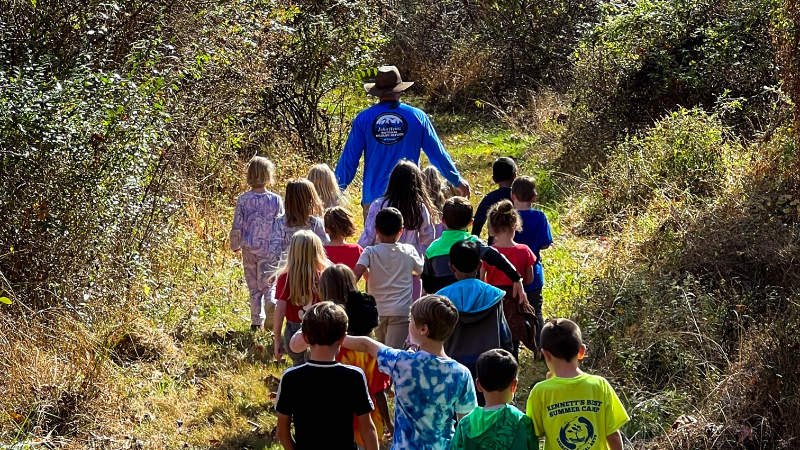
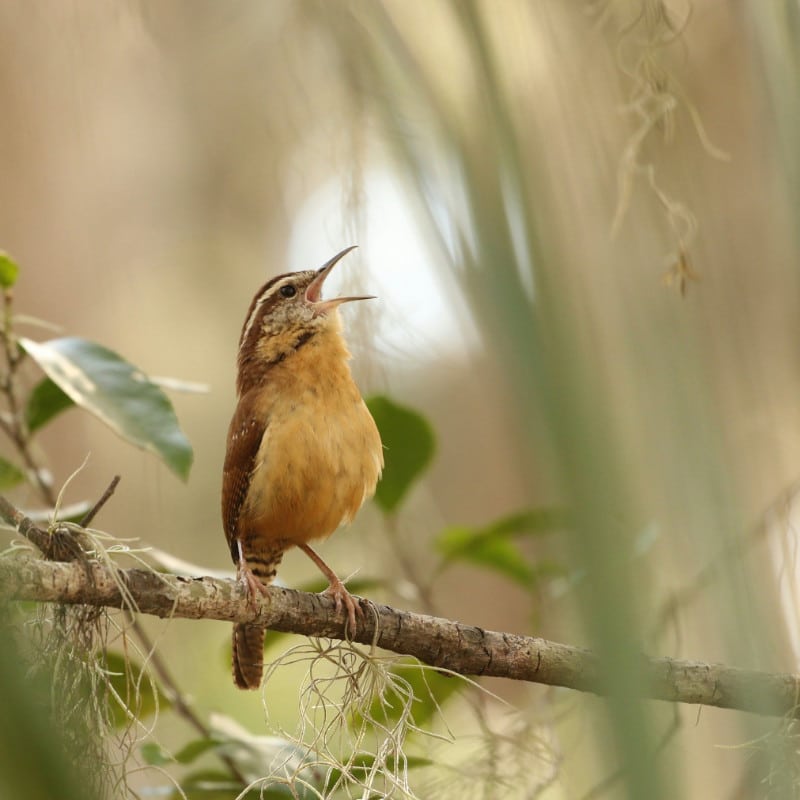
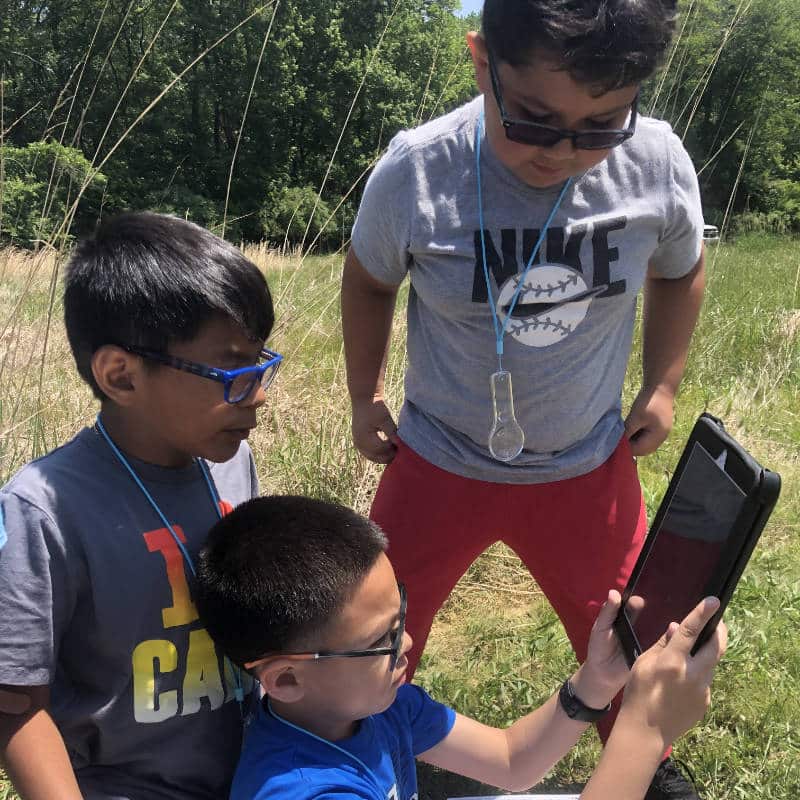
“The outdoor science classroom brings learning to life for our students. The hands-on experience provides authentic learning opportunities and allows students to see the science all around them!”
— Third-Grade Teacher, Greenwood Elementary
What Is an Outdoor Classroom?
These spaces, also known as living schoolyards or ecological schoolyards, are child-centered outdoor environments that enable place-based, hands-on learning while strengthening local ecosystems. They don’t necessarily need to look like formal classrooms, with tables and chairs. They can exist as a schoolyard tree planting, a stream where students observe macroinvertebrates, or a native plant garden where they study pollinator species.
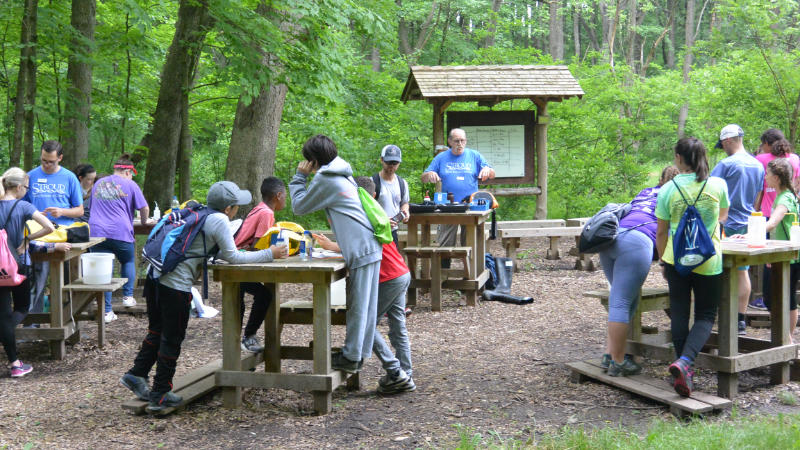
The Stroud Center in southeastern Pennsylvania offers opportunities for outdoor learning and serves as an inspirational campus for visiting educators seeking to create similar spaces at their schools.
At the outdoor learning laboratory, students work at cedar lab tables and learn in research teams to test water samples from the nearby creek. Another area has benches facing a whiteboard kiosk, where the teams discuss their data. There’s also a pavilion with Scout-crafted tables and benches, electricity for plugging in microscopes and projectors, and stormwater management features.
These thoughtfully designed spaces allow educators to integrate the creek and streamside forest into lessons on freshwater ecosystems and how to protect them. At the same time, they keep students focused while outdoors, are accessible to those with mobility limitations, and reduce the risk of erosion by keeping students farther from the stream’s edge.
School campuses can range from half an acre to thousands of acres, such as at large universities, and their potential to impact water quality in their local watershed is significant. Pavement or sprawling lawns can be transformed into more river-friendly landscapes like rain gardens, streamside forests, and wildlife meadows that better care for plants, animals, rivers, and streams. Plus, these spaces can be incorporated into lessons on ecosystems, human impacts, math, art, and more.
Stroud Center educators have been inspired by the scientists’ research laboratories to create outdoor learning spaces that enable visitors to engage in real science through outdoor field studies. These active and participatory studies on the Stroud Center’s 55-acre campus rely on lab-like tables for water chemistry testing and spaces designed to foster discussion for data synthesis. The fact that they are outdoors is key.
Joshua Leight, principal of Hillendale Elementary School, says, “Kids spend way too much time indoors right now. Our kids kind of grow up indoors, so the more we can bring them outside, the better.” His school was another to receive support from the Stroud Center in 2023.
Taking students outside for more than just playtime first became popular in the early 20th century with the spread of tuberculosis, according to a 2020 article in Smithsonian Magazine. Its popularity waxed and waned in the decades that followed. More than a century later, the coronavirus pandemic again highlighted one of its benefits: fresh air. As educators looked for ways to safely bring students together, the Stroud Center’s outdoor education programs became more popular than ever, and more teachers and administrators wanted to learn how they could create similar outdoor learning spaces on their school campuses.
Professional Development
Stroud Center educators responded by providing guidance, professional development, and resources to help them. In 2023, they supported about a half dozen public schools through the initiative. The demand continues, and more schools are joining the initiative in 2024.
Jennifer Braunstein, a teacher at Greenwood, is pleased with the support she received: “It was invaluable to work with the Stroud Center on not just the planning of the spaces but also on the outdoor lessons.”
After walking through her school’s campus with Stroud Center education staff, she realized that Greenwood’s outdoor classrooms were surrounded by windowed school walls on all sides, “sort of in a fishbowl,” she says, or they were in direct sunlight. The Stroud Center’s support enabled Greenwood to purchase picnic tables that now sit farther away from the building and along the school’s winding creek, where teachers deliver lessons on stream ecology.
“ I love being out here and exploring. It reminds me of when we lived in Puerto Rico, and we explored the mountains.”
— Fifth-Grader, Greenwood Elementary School
“ I like bridges because they are sturdier, and the picnic tables are nice.”
— Second-Grader, Greenwood Elementary School
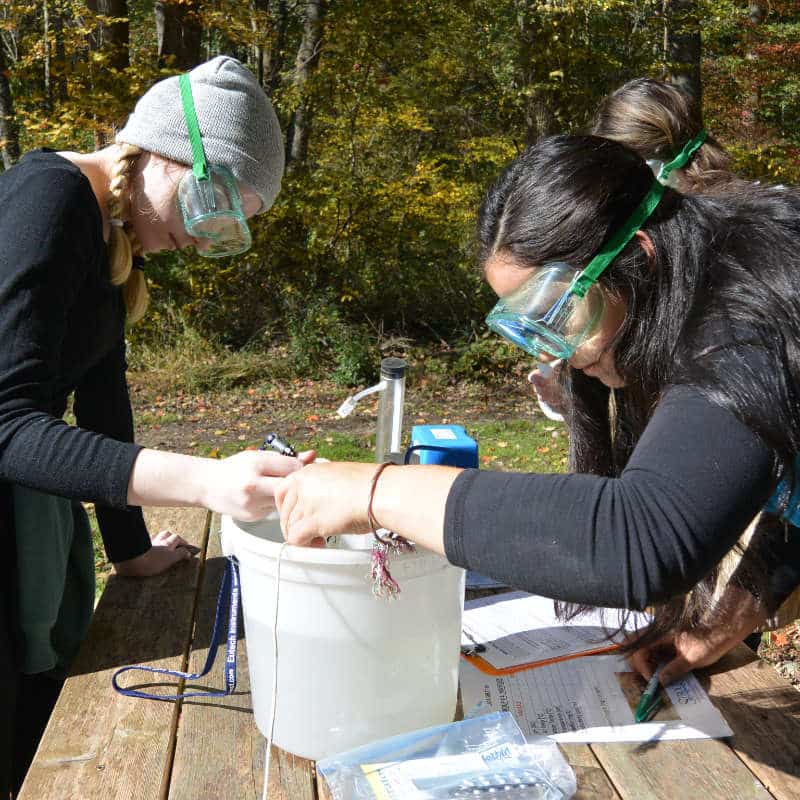
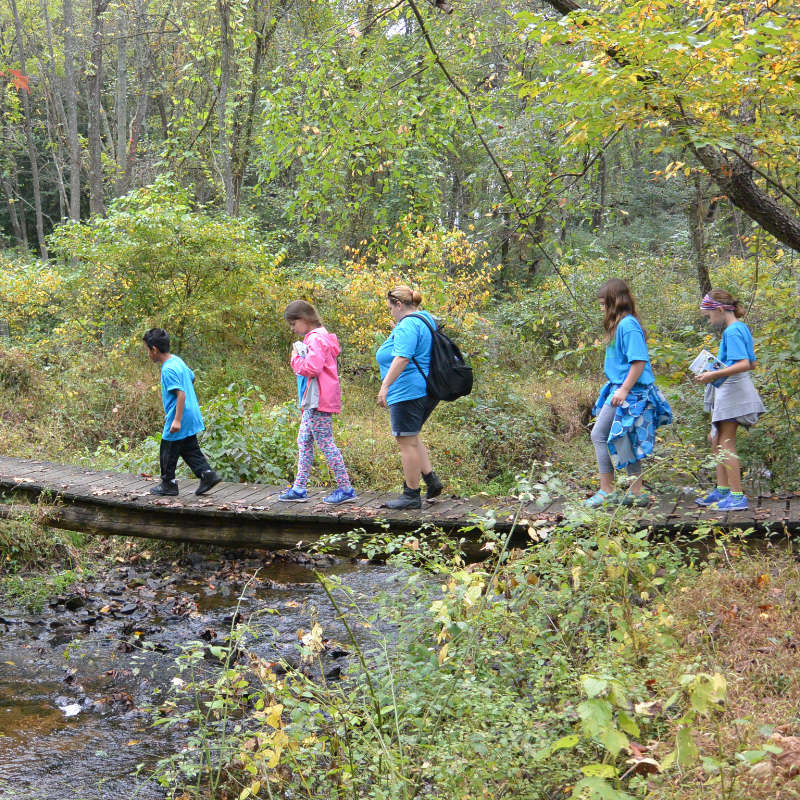
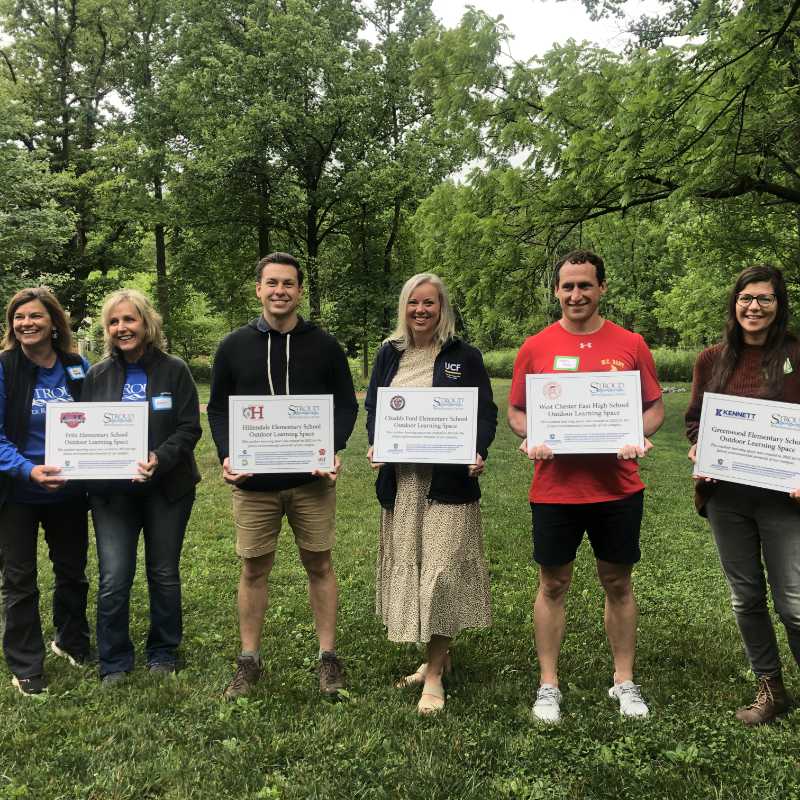
Outdoor Learning Informed by Research
There are many reasons why more time learning outside, in nature, is a good thing. The Stroud Center has documented some of them. In one study, Director of Education Steve Kerlin, Ph.D., and Nanette Marcum-Dietrich, Ph.D., from Millersville University found students experienced feelings of well-being when learning outside, and teachers reported that their students were more creative, collaborative, and better behaved and engaged.
Other studies have found similar benefits and more related to physical and mental health, as well as improved learning outcomes. As a result, the education landscape is changing. More schools, and nonformal education settings like nature centers, are creating their own outdoor learning spaces.
Kerlin says, “Outdoor learning puts the learner and the natural world at the center. People care for and protect what they value, and if we want our children to become good stewards of the natural world around them, we have to help them experience the outdoors and discover nature for themselves. Dedicated outdoor learning spaces are designed with this in mind and can be used to enhance all areas of learning — from science and math to social studies and language arts.”
Anthony Prinzo, Science Department chair at West Chester East High School, engaged students in the design process of their outdoor learning space with help from the Stroud Center. He says his school “is proud to state that our classroom was built 100% in-house by students and overseen by educators and community members. It taught our students engineering and design processes, construction, and budgeting skills. Moreover, it has inspired other schools in the region to embark on similar initiatives, creating a ripple effect of environmental education.”
The ripple effect extends beyond southeastern Pennsylvania. The Stroud Center is advising state, regional, and national agencies and organizations on the creation and use of outdoor learning spaces and more related to environmental education. As more states seek to better utilize their school grounds for outdoor learning, the Stroud Center is leading the way, advising on best practices such as how to make outdoor learning more inclusive and accessible, while also benefiting the watershed.
Get Involved
For resources and tools that support the creation of outdoor learning spaces worldwide, including example conservation practices, visit Pennsylvania Gateway to Green.



